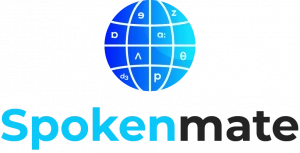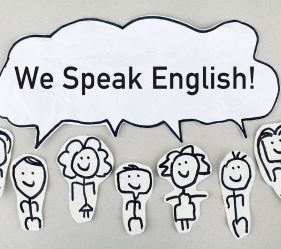
Rules For Using Punctuation in English
Knowing how to use punctuation marks correctly in English, is very important for each individual. You may come across punctuation marks that you’re unsure about while some might seem straightforward, and this post serve as a handy reference.
If you want to explore it in more detail and suggestions for each punctuation mark, you’ll find “further reading” and detail online course in Spokenmate.
Note: When there’s a difference in British English usage, I’ll explain that too, but here we’re going to focus on American English punctuation.
Punctuation Marks That End Sentences
Period:
This is the first punctuation mark that children usually learn: the period or, if you’re British, “full stop”, at the end of a sentence.
Example:
Sarah ran to school.
After (and sometimes in) many abbreviations, period is also used:
Example:
Mrs. Jones waved to Sarah.
Some employees, e.g. receptionists, need to work set hours.
Note: however, the period after Mr, Mrs, and Ms. are normally omitted in the British English.
Question Mark:
A sentence should end with a question mark, if it poses a direct question.
Example:
Did you remember to buy milk?
How much do I owe you?
Is this the right way to the park?
Exclamation Point:
The exclamation point or in British English “exclamation mark” is used to indicate or to add emphasis on that words which are being spoken in surprise, alarm or excitement.
Example:
I just heard the good news – congratulations!
“Oh no!” She stared at the mess in dismay.
In formal writing, exclamation points are not normally appropriate, such as business reports or academic essays. Unless you’re writing something very informal, you should only use one exclamation point (such as a text message to a friend).
Comma:
In a number of ways, commas can be used including to separate items in a list or to separate elements of a sentence.
At the start of a sentence after a subordinate clause, they’re used :
Example: After the play, we went for dinner.
To separate items in a list, they’re also used :
Example: Peter found a marble, a button, and a piece of string.
To make them easier to read within large numbers, Commas can also be used:
Example: I had $1,500 to spend on a holiday.
Note: When giving a year in numerals: it’s 2019 nor 2,019, that commas aren’t used.
Colon:
To introduce an series or example of items, or to join two independent clauses especially where the second clause explains the first, A colon can be used. To introduce a quotation, colons can also be used though it isn’t always the best choice of punctuation mark for that.
Example:
For the school trip, please bring: a water bottle, sun hat and some spending money.
As there was no point staying after Sally had gone: I went home.
Semicolon:
To join together two independent clauses that could otherwise stand as independent sentences, the semicolon or sometimes written as semi-colon is used.
Both these examples are grammatically correct:
I ordered a pizza’s for lunch, life’s too short for counting calories.
I ordered a pizza’sfor lunch; life’s too short for counting calories.
In place of commas in a list that has commas within the list items, semicolons can also be used.
For instance:
I plan to visit: England, where I’ll see Buckingham Palace; France, where I’ll see the Eiffel Tower and Germany, where I’ll see Neuschwanstein Castle.
Dash:
The dash (not to be confused with the hyphen) is a handy punctuation mark and to replace parentheses or a colon, dash can often be used.
For instance:
The girl inked her hand (tentatively).
The girl inked her hand—tentatively.
It can also be used to indicate an interruption (e.g. in dialogue).
There are two types of dash:
The en-dash: –
The em-dash: —
The em-dash is normally, in American English, used in sentences, as in the example above. To indicate a range of numbers or a span of time, the en-dash is used :
From 2012–2014, I was at university.
The use the en-dash in place of the em-dash is seen in some publications, such as the Guardian. You should put spaces around the en-dash, if you do this.
Quotation Marks:
Quotation marks enclose words that are a direct quotation. They’re used around dialogue, like this:
John said, “What’s the matter with you?”
Martin sighed. “You know what’s the matter.”
Quotation marks are always used in pairs and single in British English while double is more common in American English.
Ellipsis:
The ellipsis is used to indicate a gap or pause:
I wanted to make it up to her… eventually.
Within quotations to indicate missing words, it can also be used, which is useful when you want to shorten a long quotation.
Don’t put five or six for emphasis, as the ellipsis should always consist of three dots – except in the most informal writing.
Parentheses:
For asides and clarifying information, parentheses are used:
Example:
He was his brother (from his mother’s first marriage).
If a sentence ends with the parentheses, the period or exclamation mark or or question mark, unless they enclose the whole sentence, should go outside the parentheses.
Parentheses are called brackets in British English.
Brackets:
To add clarity to a sentence, brackets are normally used, such as when you’re quoting someone. Rather than the words of the person you’re quoting, they indicate the addition of your words.
For instance:
“We went [to the new wax statue exhibition] and had a great time.”
These are called square brackets in British English.
Braces:
Outside computer programming and mathematical expressions, braces are rarely used, especially where they keep elements together.
Here’s an example:
img.emoji {
display: inline !important;
border: none !important;
}
Punctuation Marks Within Words.
Apostrophe:
The two main purposes of apostrophe are: to indicate a missing letter and to indicate a possessive. It’s used within words, like this:
Example:
Jake’s cake was much nicer than the one Sam made.
I don’t have enough time to get involved.
Watch out for words that are easily confused, like “it’s” (short for “it is”) and “its” (belonging to it) and be careful not to use apostrophes in plurals.
Hyphen:
To joins two or sometimes more words together into a compound word, hyphens are used.
For instance:
He studies seventeenth–century literature.
We want to foster our follower’s self–confidence.
I get on very well with my father–in–law.






